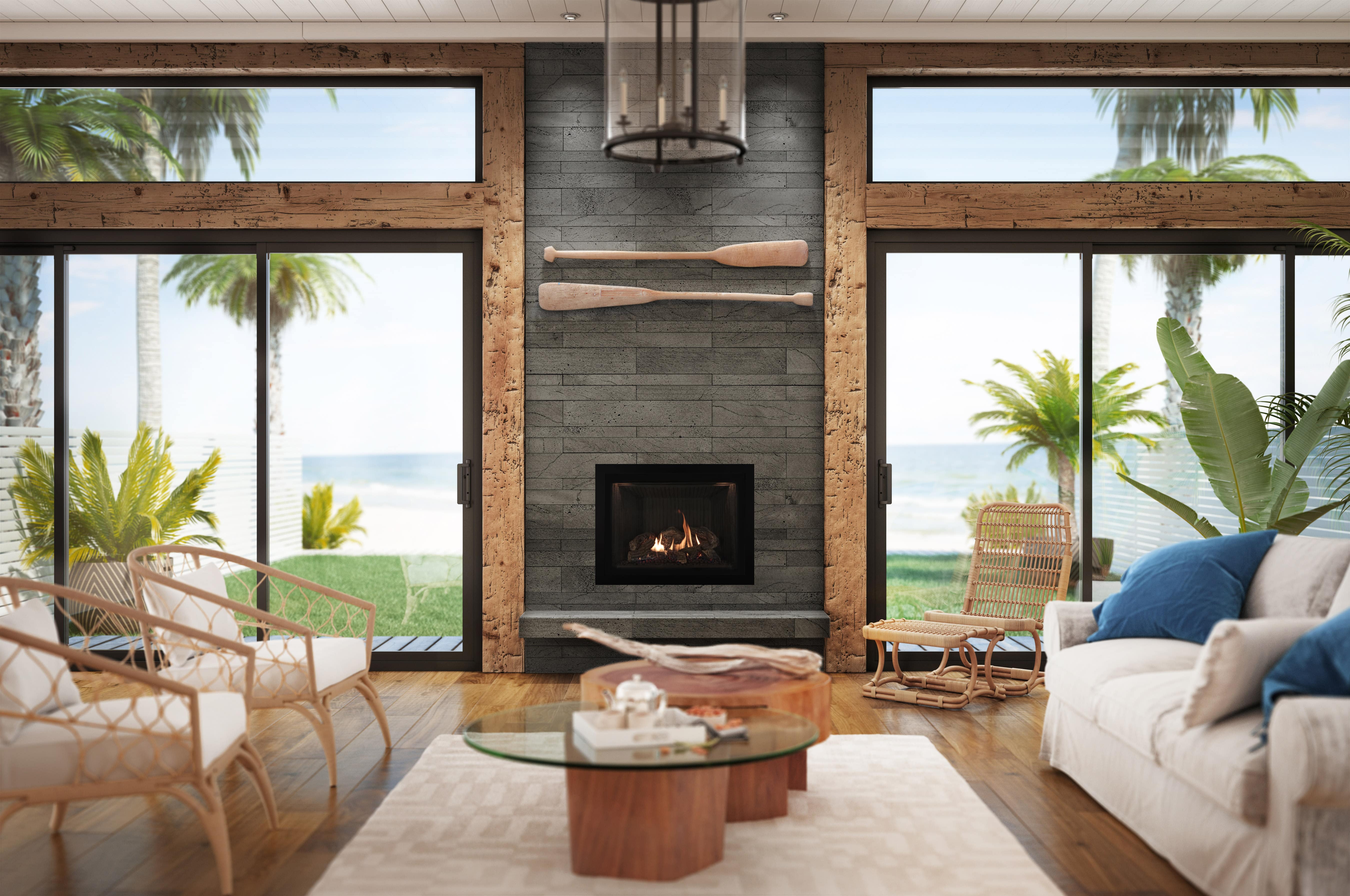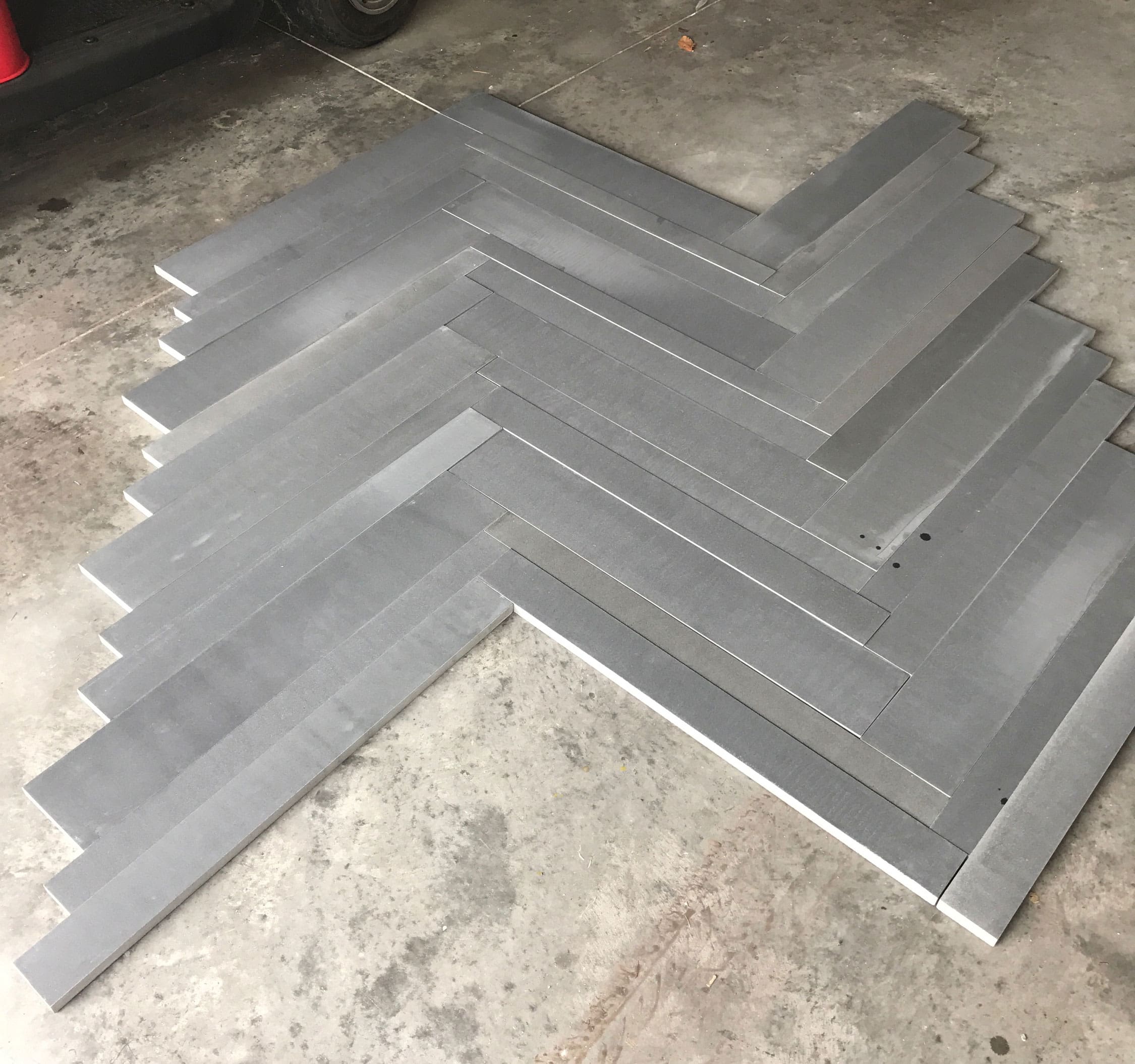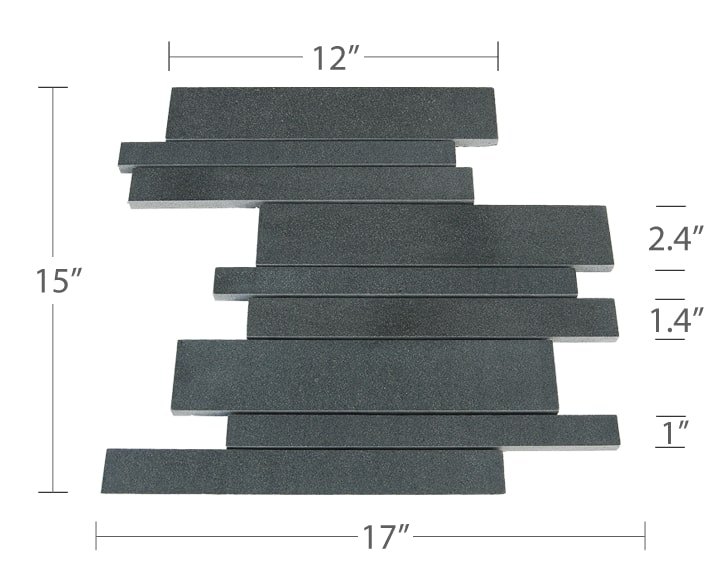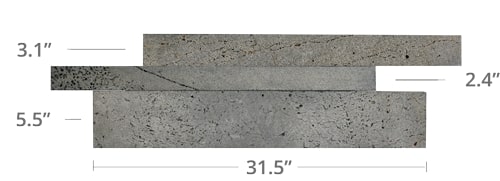How Pattern Choice Can Impact Takeoffs on Stone Veneer Installations
Most of our natural stone veneer products are installed in what we call a random pattern, where basically the installer is taking care to not line up the vertical seam between two panels from one course to the next. This is true for the majority of the products we sell, including our Standard, XL, and Slim Line Series Rock Panels as well as our Aksent 3D Honed Stone Veneer panel system. The Lynia Interlocking Tile and our newly released Planc Large Format Tile can be laid in a variety of patterns.

We love it when our customers set these products in different patterns, like a nice herringbone Planc installation, or simply installing Lynia tile on a vertical orientation instead of horizontally. It’s almost like you’re seeing a totally different product! An important step when setting a tile product in a specific pattern is determining how that pattern fits into the space where it’s going and then making sure the amount of material ordered and on hand is enough to cover the job. Certain patterns with certain relative dimensions are going to create more waste than others.

The easiest way we’ve found to explain this concept, both internally when training our own team members, as well as when speaking with our dealers, distributors, and customers is by providing examples. So let’s take a look at a few simple ones to grasp this concept so it can be applied to any project you are working on.

Our Lynia Interlocking Tiles are preset in a staggered pattern. Each tile unit consists of 9 strips, and when laid in its native horizontal orientation, each unit is about 17” end to end and 15” tall. A great, and very common, example of how pattern can impact how much material is needed for a project is to consider a standard kitchen back splash that is 18” tall from counter top to the bottom of the upper cabinets and for purposes of our example, we’ll assume its 10 feet long. If you’re setting a 2” tall subway tile in this space you simply need to calculate length (10 feet) x width (18”) to get your total sq ft, which in this example turns out to be 15 sq ft. If selecting a patterned tile like Lynia, you’d need to consider the height of the tile unit (15”) relative to the height of the space (18”). In this example, you’d need TWO rows of Lynia units to fill up the 18” height – the first row will be a full unit at 15” tall and the second row will be a full unit cut down to 3” in height. Calculating this out, you’d need 20 units total, or about 26 sq ft, of the Lynia tile for this job, due to the pattern.

Our new Planc Large Format Tiles offer an even wider range of pattern options because each Planc set is three loose strips of stone, each of the strips are 31.5” long and are 5.5”, 3.1” and 2.4” tall. A good example of how a pattern with Planc can impact the material calculation is to consider a simple feature wall that is 48” wide and 10’ tall. The simple width x height calculation gives you an easy 40 sq ft of material, and if you’re choosing to set the Planc in a random running bond pattern, you’ll get great coverage out of each unit and be good with 40 sq ft plus a normal waste factor. But what if you wanted to do a symmetrical pattern where you split the wall in half down the middle and straight stacked the tiles from floor to ceiling? In this pattern you’d end up cutting each of the Planc sets down from 31.5” to 24” (equal to half the width of the wall), and your material requirement would be 22 full sets, or 52.8 sq ft plus a normal waste factor.
Confused yet? We hope not! Patterns do take a cerebral approach to calculating the material needed for a stone installation, and often times a complicated pattern, especially if used in a small space, will result in more material needed than just the actual square footage on the wall suggests, but we think you’ll agree that a pattern can really enhance the look of a stone installation. If you’re considering a pattern and want help calculating how much material is needed for your project, or just want to learn more about any of our products, please call one of our amazing team members who will be more than happy to help walk you through the process.
.png)



